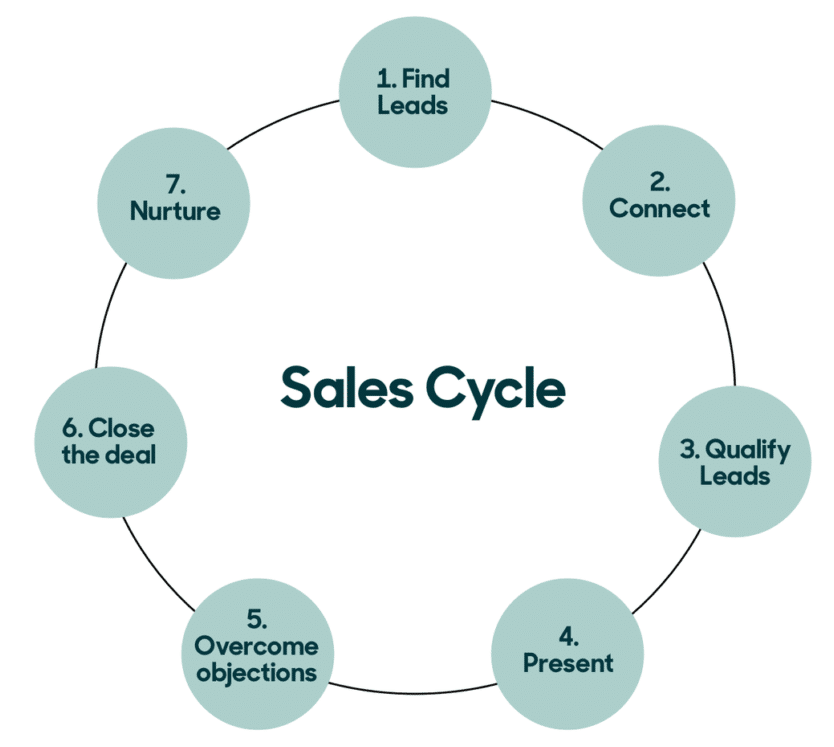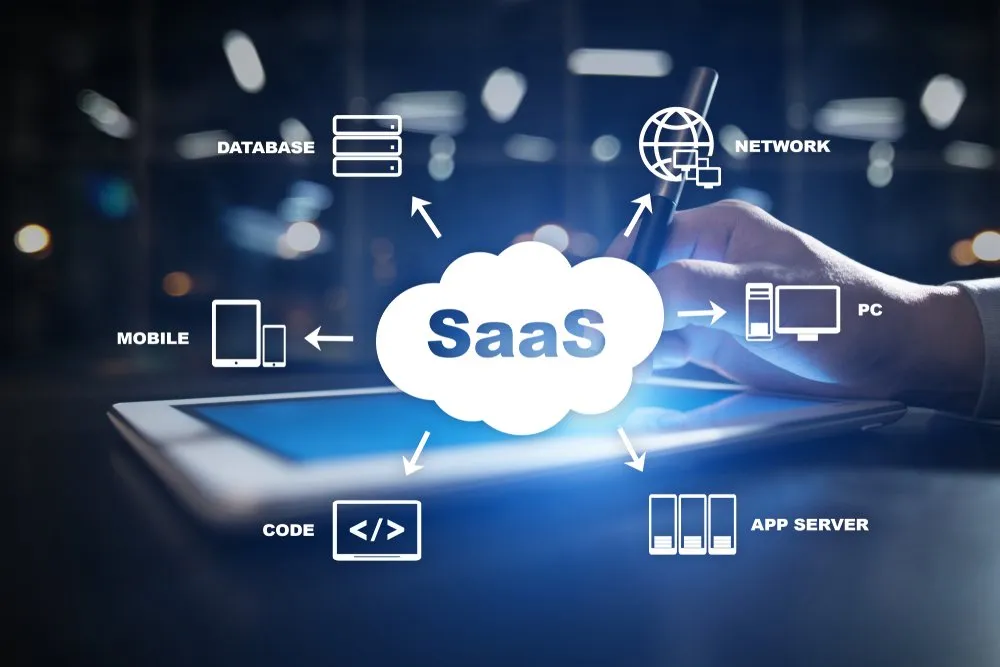What is sales cycle SaaS software?
Sales Cycle SaaS refers to a software-as-a-service (SaaS) solution designed to optimize and automate the various stages of the sales cycle. It is a comprehensive platform that integrates with CRM systems. This allows businesses to streamline sales operations, process increase efficiency, and grow revenue. Sales Cycle SaaS allows companies to manage leads, track interactions with customers, and gain valuable insight into their sales performance.
Understanding the Sales Cycle
It’s important to understand the sales cycle before diving deeper into Sales Cycle SaaS. The sales cycle is the process of converting a prospective customer into a paying one. The sales cycle is usually divided into several stages: prospecting, lead generation, lead qualification, and negotiation, as well as closing. Each stage is crucial to the progression of the sales process, and ultimately driving revenue.
The Importance Of Sales Cycle Optimization

Optimizing the sales process is essential for businesses that want to improve customer satisfaction, increase revenue, and improve conversion rates. A streamlined cycle allows sales reps to engage prospects effectively and guide them through their buying journey. Businesses can optimize the sales cycle to reduce inefficiencies, eliminate bottlenecks, and create a seamless customer experience.
Benefits of SaaS Sales Cycle
Sales Cycle SaaS has several benefits that will impact your sales process. Here are some of the main advantages:
Enhanced efficiency: The Sales Cycle SaaS automates tasks such as data entry, reporting, and other manual tasks. This allows sales reps to concentrate on developing relationships and closing deals.
Better Collaboration: Sales Cycle SaaS allows teams to easily collaborate and exchange information. This ensures everyone is working toward the same goals and on the same page.
Real-Time Insights Sales cycle SaaS offers real-time analytics and reporting to provide valuable insights on sales performance, pipeline health, and areas of improvement.
Flexibility and Scalability: SaaS-based solutions are flexible and highly scalable. They allow businesses to grow and adapt without having to invest in infrastructure.
Streamlined Sales Cycle Management: SaaS for Lead Management enables efficient management of leads, from prospecting to nurturing and conversion. This ensures that no opportunity is missed.
PayPro Global is a trusted merchant of records that helps businesses maximize the benefits of the SaaS Sales Cycle. PayPro Global, as a merchant-of-record, offers a suite of services that are designed to optimize revenue management and simplify the sales process.
They act as a secure gateway for payments, compliance, and tax management. To learn more, visit their site.
By using merchant-of-record services, businesses can concentrate on their core competencies and ensure seamless sales transactions.
Implementing Sales Cycle SaaS: Key Considerations
To ensure a smooth transition, you should consider several factors when implementing the Sales Cycle SaaS within your organization. Included are:
Define Your Sales Goals Clarify your sales goals and align them to the features and abilities of the SaaS Sales Cycle solution that you select.
Assess Integration Compatibility. Make sure that your Sales Cycle SaaS is compatible with other tools and CRMs to prevent data silos.
Scalability and Customization: Evaluate the level of customization offered by Sales Cycle SaaS to meet your unique needs and plans for growth.
User adoption and training: Prepare for successful user adoption by providing thorough training to your sales team, making sure they understand the platform’s benefits and are proficient at using it.
Data Security and Compliance: Give data security and compliance a high priority by choosing a SaaS Sales Cycle provider who adheres to security protocols and regulations that are industry standard.
Stage 1: Prospecting & Lead Generation
Prospecting and lead generation are the first stages of the sales cycle. Businesses identify potential customers that may be interested in their products and services. Sales teams use various strategies, such as cold-calling, email marketing, and social media outreach to engage and attract prospects. Sales Cycle SaaS offers advanced lead management capabilities, allowing businesses to track and nurture their leads.
Stage 2: Qualify and nurture leads
After identifying prospects, the next step involves qualifying and nurturing leads. It involves assessing each lead’s potential value and determining if they meet the criteria to become a qualified opportunity. Sales reps use personalized conversations, targeted marketing, and follow-ups to establish relationships, address concerns, and move leads toward conversion. Platforms for the sales cycle SaaS provide lead scoring, automated nurture campaigns, and communication trackers to optimize this stage.
Stage 3: Presentation and Proposal
The third stage of the sales cycle involves the presentation of proposals and solutions that address the specific needs of the leads. Sales reps use Sales Cycle SaaS to create compelling and professional proposals that are tailored for each prospect. These tools can include customization options, templates, and collaboration features that ensure seamless communication and an effective proposal presentation process.
Stage 4: Closing a Deal
The closing of the deal is an important stage in the sales process. Sales reps use Sales Cycle SaaS to manage and track the final stages of negotiation, contract pricing, and contract. These platforms offer features such as deal tracking, document storage, and eSignature integration. This streamlines the closing process, ensuring that a smooth transition occurs from prospect to client.
Stage 5: Customer Relationship Management and Post-Sales
After a sale is made, the post-sales phase begins. Customer relationship management is essential for increasing customer satisfaction, encouraging loyalty, and generating repeat business. Sales Cycle SaaS offers CRM functionality that allows businesses to track customer communication and manage interactions. This stage includes activities like onboarding, cross-selling, and upselling to foster long-term customer relationships.
Key Metrics of Sales Cycle SaaS
Key performance metrics are essential for evaluating the impact and effectiveness of Sales Cycle SaaS. Consider these metrics:
Conversion rate: The percentage of leads that convert successfully into paying customers.
Length of Sales Cycle: Average time to move a prospective customer through the sales cycle.
Win rate: The percentage of opportunities that result in closed sales.
Lead response time: The amount of time that sales reps take to respond to the leads’ requests or inquiries.
Value of the Pipeline: Total value of all sales opportunities.
Businesses can improve their sales processes, identify improvement areas, and make data-driven decisions to increase revenue by tracking and analyzing these metrics.
Sales Cycle SaaS Best Practices
Consider the following best practices to get the most out of Sales Cycle SaaS:
Align Marketing and Sales: Foster a collaborative relationship between the sales and marketing team to ensure that the transition from lead generation through nurturing and closing is smooth.
Customer Experience is Priority: Deliver an exceptional experience to customers throughout the entire sales cycle to increase satisfaction and the likelihood of repeat purchases.
Train and Develop Continuously: Offer ongoing training and developmental opportunities to your sales team so that they are always up-to-date with industry trends and best practices.
Regularly review and optimize: Constantly review and optimize your Sales Cycle and Sales cycle SaaS implementation using performance data and feedback from customers.
Integration of Sales Cycle SaaS and CRM
Sales Cycle SaaS’s ability to integrate seamlessly with CRM systems is one of its key advantages. This integration improves data visibility, streamlines processes, and creates a central repository of customer information. Integrating Sales Cycle SaaS into your CRM allows you to create a platform that empowers the sales team to manage leads effectively, track interactions, and provide personalized experiences during the entire sales process.
Using SaaS to overcome challenges in the sales cycle
Implementing SaaS for Sales Cycles can present its challenges. Some of the challenges that businesses face are:
Resistant to Change: Sales Teams may resist at first adopting new technologies and changing established processes. Training, communication, and the promotion of benefits are all ways to overcome resistance.
Data Integration and Migration: Migrating and integrating existing data with existing systems is complex. These challenges can be overcome with careful planning, data cleaning, and collaboration between IT teams.
User adoption and engagement: Ensuring widespread user acceptance and active engagement with Sales Cycle SaaS requires effective communication and training.
By proactively addressing the challenges that arise, businesses can streamline the implementation process of Sales Cycle SaaS and maximize its benefits.
SaaS Sales Cycle Onboarding and Training
Training and onboarding are essential for the successful adoption of Sales Cycle SaaS. Consider these strategies:
Comprehensive Programs for Training: Develop training programs covering all aspects of the Sales Cycle SaaS including features, functionality, and best practices.
Hands-on Practice: Allow sales teams to practice using Sales Cycle SaaS in a simulation environment.
Ongoing support: Provide ongoing support by offering training materials, guides for users, and a support team dedicated to answering any questions or concerns that may arise.
Businesses can invest in comprehensive training and onboarding to ensure their sales team has the skills and knowledge needed to use Sales Cycle SaaS.
Sales Cycle SaaS vs. Traditional Sales Processes
Sales Cycle SaaS has many advantages over traditional sales processes. It offers real-time insight, eliminates time-consuming manual tasks, improves collaboration, and is scalable. On the other hand, traditional sales processes rely heavily on manual data input, disconnected systems, and limited transparency in sales performance. Businesses can improve efficiency, productivity, and customer satisfaction by adopting Sales Cycle SaaS.
The conclusion of the article is:
Optimizing the sales cycle in today’s highly competitive and fast-paced business environment is essential for sustainable growth. Sales Cycle SaaS is a comprehensive tool that streamlines sales processes, increases productivity, and drives revenue growth. Businesses can manage leads effectively, track customer interaction, gain valuable insight, and cultivate long-term relationships by implementing Sales Cycle SaaS. Sales Cycle SaaS will revolutionize your sales process, allowing you to stay on top of the ever-changing marketplace.




